THE CULT NEXT DOOR

PG.24 THE AGE OF DESENSITIZATION PG.10 THE REAL LIFE OF A SHOWGIRL
PG.28 WHAT’S SCARIER THAN HALLOWEEN? THE JOB MARKET


PG.24 THE AGE OF DESENSITIZATION PG.10 THE REAL LIFE OF A SHOWGIRL
PG.28 WHAT’S SCARIER THAN HALLOWEEN? THE JOB MARKET






KERRY



KAILI




To Paxon graduate Heidy Khlaaf for being named to the “TIME Magazine” 2025 list of the 100 most influential people in artificial intelligence. She currently serves as the chief AI scientist at the AI Now Institute.
To Downtown Vision Inc. for organizing major recurring events that bring people to the downtown area. These include the monthly First Wednesday Art Walk, Third Thursday Sip & Stroll and the annual DT Jax Awards.

To James Weldon Johnson Park for hosting VIva La Fiesta, a two-day Hispanic festival celebrating Hispanic Heritage Month featuring Latin music, food, and family-friendly fun last month.
To Jax River City Pride and Jacksonville LGBT Chamber of Commerce — a huge rainbow bouquet — for not letting anyone rain on their Pride parade (figuratively speaking). In 2024, the River City Pride Parade unveiled the first-ever rainbow crosswalks at Willowbranch Park in Riverside, site of Jacksonville’s inaugural Pride picnic in 1978 and the headquarters of JASMYN. These crosswalks were strategically placed to honor the city’s rich LGBTQ+ history and to serve as a welcoming beacon for the community. Due to FDOT mandating the removal of painting, however, the Jacksonville LGBT Chamber of Commerce launched the “Will Not Be Erased” campaign, aiming to fund new public art installations that reflect the resilience and pride of Jacksonville’s LGBTQ+ community. BRAVO TO ALL INVOLVED IN THE CAMPAIGN OF RESILIENCE!
To White House Press Secretary Karoline Leavitt for her non-news news briefings which are more about noise and deflection, and where loyalty outranks truth. She constantly turns questions into insults, facts into theater, and the White House into a loyalty cult masquerading as governance. We have dubbed her as “Washington’s Circus Ringmaster”: Combative, defensive, and substance-free with zero accountability, Leavitt embodies everything wrong with modern political theater.

To Chez L’Amour in St. Augustine for abruptly closing in late September causing numerous brides to be left without a venue. According to a letter sent to clients from the owner’s attorney, the building failed several inspections and was closed indefinitely. Multiple couples reported they were never officially notified of the closure.


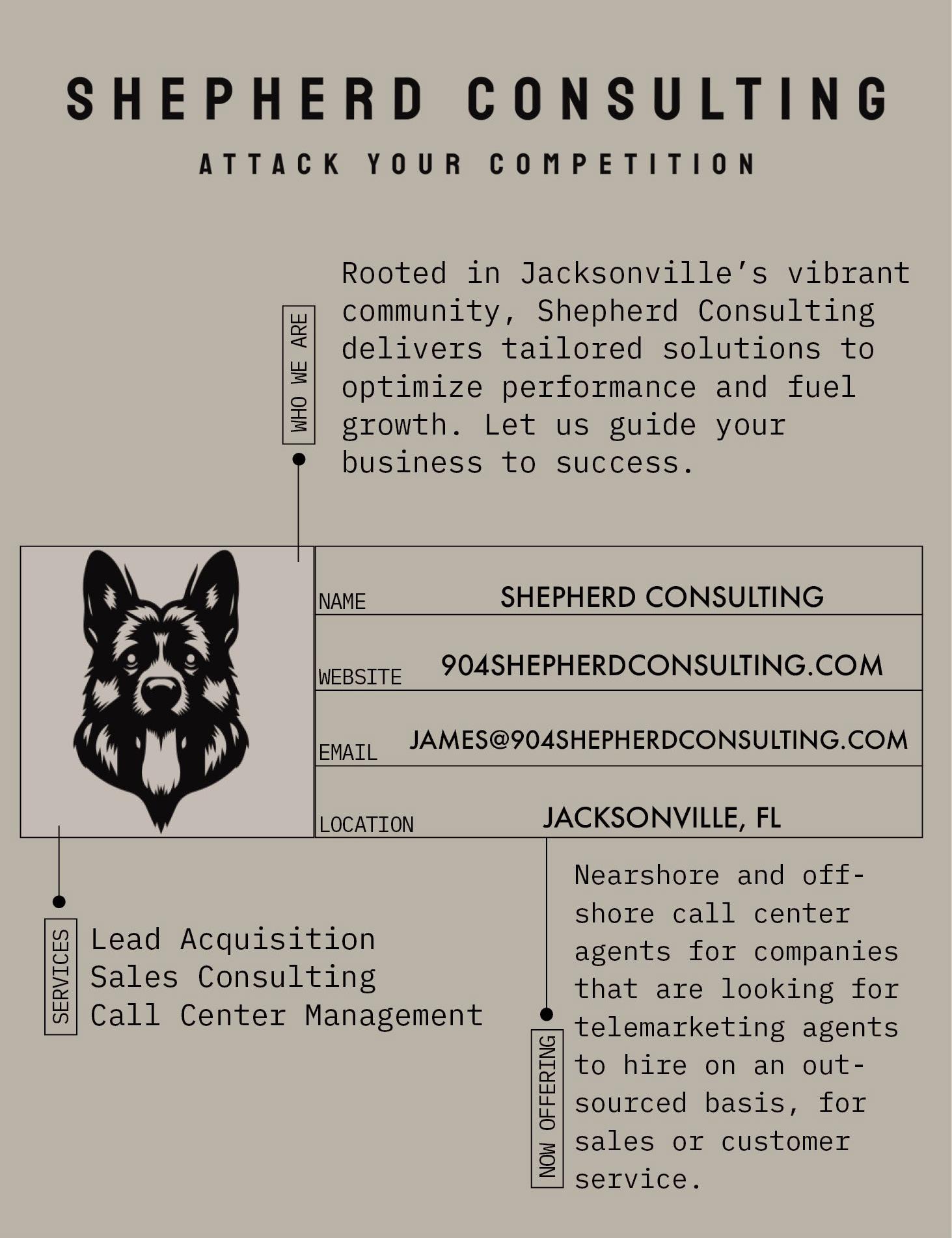
Words by Ambar Ramirez & Carmen Macri
October is filling your cup, Aries — and not just with pumpkin spice. Both romantically and professionally, the season is casting its spell on you. With the Sun in Libra until Oct. 22, your partnerships take center stage, glowing under the harvest moon. This month may have you wondering if things are too good to be true, but sometimes magic really does work in your favor. No need to rattle those skeletons in your closet just yet — let them rest in peace a little longer.
This month, Taurus, the ghosts of old grudges might start rattling their chains — and they’re haunting the wrong people. It’s time to trace those feelings back to their source and finally lay them to rest. Set your boundaries like salt circles and protect your peace. When Mercury drifts into Sagittarius on Oct. 29, the fog will lift, and your sense of optimism will return.
Welcome back to the spotlight, Gemini — did you miss the eerie glow? With Pluto creeping out of retrograde on the 13th, life may finally start to feel less like a bad dream. No more “why is this happening to me” hauntings. And as the Sun slinks into Scorpio on the 22nd, you’ll be ready to slay those lingering tasks one by one, like monsters hiding under the bed, without breaking a sweat.
Your energy this month is magnetic and a little otherworldly, Cancer — people can’t help but be drawn to your glow. If there’s a bond you’ve been meaning to deepen or a cre ative idea that’s been lurking in the shadows, now’s the time to breathe life into it. Just be careful not to let your intensity turn into a spell that overwhelms others.
Keep your friends close and your enemies closer this month, Leo — that’s the saying, right? October has you side-eyeing everything, peeking behind curtains for lurking ghouls and restless ghosts. And speaking of spirits, as Pluto shifts back into place, someone from a once-dead relationship may come knocking. It’s your call whether to crack the door open … or keep it bolted tight against the haunt.
Ever heard the saying “keep your friends close and your enemies closer,” Virgo? This October, that phrase takes on an eerie new meaning. Pay close attention to the people in your circle — friends, lovers, even coworkers — and how their energy seeps into your thoughts and choices. Are you carving your own path or walking one someone else has whispered you onto? Watch for shadows disguised as guidance.
Your time is almost up, Libra — at least under the shining Sun. Savor these final golden rays because by mid-month, the shadows of your busy life return to claim you. The New Moon on Oct. 21 will rattle your sense of certainty, making you question everything you thought you knew. Even the simplest tasks — like locking the door — may leave you second-guessing whether something unseen slipped in behind you.

October is a work-hard, play-hard month for you, Scorpio. Push through the grind in the first half, and by the New Moon on the 21st, the rewards of your hard work rise from the shadows. With the Libra Sun lingering in your house of introspection until the 22nd, you may feel haunted by thoughts and emotions that won’t stop swirling. Face them now, because once the veil lifts and your season begins, it’s your time to go delightfully buck-
You’re hungry for real connection, Sagittarius — the kind that stirs your soul, not just fills the silence. But before new bonds can form, the old ones must die. Let go or risk being haunted by what’s already gone. Beware your brooding side this month — linger too long in the dark, and even the light will stop calling your name.
October is part hibernation, part resurrection for you, Capricorn. One moment you’re craving solitude in your castle tower, the next you’re itching to throw open the gates and step back into the world. The tug-of-war will wear on your mind, especially when it comes to relationships — hiding away feels safe, but isolation can be its own curse. The New Moon on Oct. 21 stirs the cauldron even more, pushing you to confront which path you’ll choose: retreating deeper into the shadows or daring to step back into the light.
No more tiptoeing across broken glass, Aquarius — this month, you’re ready to speak your truth, even if it shakes the room. Your power is rising, sharp and unstoppable, but beware letting your fire scorch what you mean to illuminate. As October deepens and Scorpio season approaches, you’ll rise from the ashes, reborn and unrecognizable.
Hold tight, Pisces — the first chill of October might come with a sting, especially when it comes to money matters. Don’t panic if things feel uncertain; you can’t rush fate, and even ghosts of lost opportunities fade with time. Every ending brews the start of something new. When Venus glides into charming Libra mid-month, a brighter chapter begins — think new deals, fresh partnerships or a stroke of luck that feels almost supernatural.















Words by Teresa Spencer
For decades, Florida cops could lean into your car window, flare their nostrils like they were auditioning for a cologne commercial, and say the magic words: “I smell marijuana.” That was all it took. Probable cause. Trunk popped. Weekend ruined.
But that era is going up in smoke. In 2025, Florida’s appellate courts are dismantling the “plain smell doctrine” piece by piece, and the legal landscape smells a lot different than it used to.
The big break ruling occurred this October by the Second District Court of Appeals, torching the old rule. The judges straight-up declared: the odor of cannabis is no longer an automatic probable cause. Why? Because Florida law itself has changed. Medical marijuana is legal. Hemp is legal. And both smell just like the stuff cops used to bust you for. So now, odor isn’t a free pass for cops. It’s just one factor in a bigger puzzle, the “totality of circumstances.” Translation: Smell alone won’t cut it anymore.
The recent ruling wasn’t alone. Several other Florida courts have ruled in the same fashion over the past few years.
The Fifth District Court of Appeals has been chipping away at this since last year:
• Baxter v. State (Aug. 2024): The court ruled that the smell of cannabis, without anything else, isn’t enough to justify tearing through your car. That decision effectively ended the plain smell doctrine in the Fifth District, at least going forward.
• Ford v. State (Jan. 2025): Even the dogs aren’t safe. The court said a K-9 alert can’t automatically create probable cause either, since the pups can’t tell hemp from high-grade.
What cops are doing now: the “odor plus” hustle. Departments know the smell alone is shaky, so they’re padding it with extras: Burnt smell + red eyes
• Odor + “furtive movements” (translation: you reached for your phone)
• Weed smell + “high-crime area” (the laziest excuse in the book)
• Basically, smell isn’t dead, it’s just demoted. It needs backup.
Of course, with Florida being Florida, don’t expect consistency. Until the state Supreme Court weighs in, the law’s as hazy as a hotboxed Honda Civic. But for drivers, this shift is huge: The next time a cop leans into your window and sniffs like Gordon Ramsay checking a filet mignon, remember, the officer’s nose isn’t the law anymore.
Oh, yeah and just so you know. There is no “good faith” exception to these new rulings. If your bust happened before these rulings dropped, tough luck. Courts have sometimes let those convictions stand, arguing the cops were just following the law at the time.
Bottom line: What this means for Florida drivers is if a cop pulls you over in 2025 and claims they “smell weed,” that’s not a golden ticket to rip your car apart anymore. They’ll need something more visible, an admission or behavior that actually suggests a crime.
When we hear the word “showgirl,” our minds often jump to sequins and spotlight—the glamor of classic burlesque, the pop-star polish of Taylor Swift or the modern-day mastery of Dita Von Teese. But what we don’t always think about — at least not out loud — are the women who built this world with fashion and fearlessness. The drag performers, the sex workers, the boundary-pushers who turned performance into protest. Too often, we romanticize the feathers and rhinestones while whispering about the lewdness, glazing over the pasties and the history they preserve: a history stitched together with rebellion, liberation and unapologetic femininity.
“Burlesque is like ballet, deeply tied to sex work, inherently tied together. Historically, a lot of women before us were arrested, stigmatized and dealt with a lot of oppression to do the performing arts that we do now. So a lot of people will look and see just the glamor. You’re right. They see Taylor Swift, they see Violet Chachki, they see Dita Von Teese, they see this copy and paste, and equally valid form of a very specific commercialized taste of what a burlesque showgirl or any type of showgirl is just for the aesthetic and the glamor,” Lady Mekaella DeMure said.
DeMure, a performer and notably a selfdubbed historian nerd, began doing burlesque (specifically neo-burlesque) after hearing “no” one too many times.
“You can only go so long hearing that you’re very talented, very skilled, you’re very disciplined. But you need to lose weight and get a nose job to be taken seriously,” DeMure shared. “So then I stumbled across a burlesque and community theater project.”
Neo-burlesque is basically the modern (and way more inclusive) evolution of classic burlesque. It’s a space that celebrates all kinds of bodies and identities, where performers use humor, seduction and creativity to make bold statements about gender, sexuality and self-expression. DeMure began producing her own shows with her production company Danger Dames.
“I started producing because there was not a lot of opportunities for women of plus-size bodies and women of color,” DeMure explained. “The entire Danger Dames brand originally was built around myself, a plus-sized black woman and a plus-sized Latina woman so that we could get opportunities to be on stage.
And then I just kept producing shows from there to curate the type of art I wanted to see. So that audiences could see themselves on stage and not just be all CIS white, thin, one type of body blond, no tattoos type of burlesque, which was what was very popular, at the time before the body positivity movement, which I’m very grateful for.”
Beyond the fire-eating, the bed of nails and the captivating floor work, DeMure is, as mentioned, a bit of a history nerd. Through her work as a neo-burlesque showgirl, she carries on the legacy of the performers who paved the way before her. But her dedication goes beyond the stage—DeMure also keeps that legacy alive through her book “Policing Muses: A History with Pasties and Merkins”. In it, she preserves the oral histories of retired burlesque stars and living legends like Bonnie Logan, Viva La Fever, Toni Elling, Judith Stein and many others, weaving together interviews and archival research to honor the women who defined the art form. And specifically highlighting the history that has been diluted and obscured.
a“I feel like the more we do shows and education, and preserving the history of those who came before us, which is one of the reasons why when I wrote my book, I was interviewing living legends for the time, and then the mentees of living legends who had just passed away, one of which has ties here to Jacksonville,” DeMure shared. “You guys have a lot of old buildings that used to be the ‘Chitlin’ Circuit,’ I believe it’s called. And so anywhere that Duke Ellington performed here, you can bet like, nine times out of 10, one of their burlesque dancers he had performing to his music live was Toni Elling. And she was a burlesque legend. She passed away in 2023. I even have one of her mentees who’s carrying on her legacy — Lottie Ellington — who is carrying on her burlesque torch, so to speak. And she’s one of, like, my well-respected colleagues that I love to work with.”
The life of a showgirl hasn’t always been as glamorous as it may seem today. Take the 1939 New York World’s Fair, for example. What was meant to be a showcase of human progress and modern culture became a battleground for artistic freedom — and women’s autonomy. Overzealous censors had it out for the fair’s entertainment district, where shows like Congress of Beauty and the “Frozen Alive” act drew massive crowds. But apparently, joy and sequins were too much for the powers that be.

Inspector Mooney — dispatched by Mayor LaGuardia himself — was sent to investigate after religious leaders wrote strongly worded letters about the “moral decay” they’d witnessed (by choice, mind you). The Rev. George Drew Egbert attended a Thursday night performance only to be shocked by the sight of women enjoying themselves on stage. In his own words, he found the acts “disgustingly revolting.”
By Monday, the raids had begun. Showgirls Joan Vickers and Fay Krop were arrested backstage mid-performance for “indecent exposure.” Their crime? Being women with agency and stage presence. The irony, of course, is that these same performers were central to the fair’s draw — the living embodiment of spectacle and showmanship — yet they were treated as threats to public morality.
And this wasn’t an isolated case. Lottie Ellington, a classically trained dancer with an extensive performance background, was reduced in headlines to “the twerking teacher.” Her art was sensationalized, her talent dismissed, her body politicized.
Even to this day, DeMure spoke about the challenge she and her production company have faced in being paid fairly and being seen as more than just a sex worker.
“I think getting people to pay artists what they’re worth because they don’t understand the risk that goes into dancing down to your pieces and pennies in artistic spaces, whether it’s public or private. The risk of doing art and the risk of women having, especially like I, the queer plus-size women, who’s openly anti-fascist, like the risk of getting arrested for being vocally loud about having agency and using your art for good. So I feel like there are a lot of people who don’t want to pay performers what their worth or just have them work for $20 or a tip bucket split or a drink ticket. And have them come perform when they’re bringing an audience to your venue,” DeMure expressed. “So that was a huge uphill battle for a long time. And eventually you just have to go, ‘I know what I’m worth, when I’m worth’ and you apply that to your personal life and your showgirl life, and you eventually just take what gigs you want to take.”
Showgirls like Vickers, Krop, Ellington and many more were more than entertainers; they were cultural catalysts — women who tested the limits of what could be seen, said and celebrated in public. They embodied rebellion in sequins, artistry in motion and femininity that refused to shrink itself to fit puritanical ideals.
So while today’s neo-burlesque scene sparkles with body positivity and inclusivity, it’s built on the backs of women who faced censorship, shame and sometimes even handcuffs. The showgirl’s life hasn’t always been glamorous, but it’s always been powerful.
“There’s a lot to burlesque. It’s the art of the tease,” DeMure said. “It’s social commentary, pop culture parody. You have a little bit of everything. But it’s always rooted in fun gimmicks, high femininity or the parody of high femininity in many ways.”






‘One
This year saw two of the most acclaimed auteurs working in film give their take on the modern American experience, with a pair of releases that are both unique to their directors’ voices and take major swings at examining our fractured landscape. Capturing the mood of our current social and political divisions has largely been an elusive task for mainstream pop culture. But with their latest films, “One Battle After Another” and “Eddington,” revered filmmakers Paul Thomas Anderson and Ari Aster take on this turbulent moment of unrest with the, frankly, necessary subtlety of a sledgehammer. With “One Battle After Another,” Paul Thomas Anderson was given the opportunity to work on his largest canvas yet, and the filmmaker opted to tell a story about modern revolutionaries fighting for a brighter future amidst a militarized occupation of a Californian sanctuary city. Leonardo DiCaprio leads the film as Bob Ferguson, a washed-up freedom fighter and single father who has spent the past 16 years demolishing his brain with drugs and alcohol. But when an old foe, in the form of Army Colonel Steven J. Lockjaw (a career best Sean Penn), reemerges, Bob must rise to the occasion and spring into action from his stupor to save his teenage daughter Willa (played by Chase Infiniti in her first film role). From its opening moments, “One Battle” is a propulsive and thrilling adventure that has much more on its mind than the average action movie, as it looks to comment on who pulls the strings of power behind closed doors and how that affects everyday communities.
Leonardo DiCaprio is often labeled as the last major movie star capable of drawing in a wide audience to see his latest work. Over the past decade or so, DiCaprio has reinvented his onscreen persona by finding a way to mine humor out of his characters — his funniest,
and arguably best, performances being in “The Wolf of Wall Street” and “Once Upon a Time in Hollywood” — allowing him to outgrow the “Titanic”-era cutie-pie and mature into a shaggier middle-age. As Bob, DiCaprio gives what could be described as his rendition of The Dude, a perma-stoned, bathrobe-clad paranoid burnout caught in a situation that has him way out of his depth. It is his strongest comedic (and possibly best overall) performance yet as he wrings laughs through his desperation during this mission while simultaneously showing a sincere affection and worry for his imperiled. It is an excellent performance at the center of an equally excellent ensemble, which also includes Penn, creating the most compelling film villain since Christoph Waltz’s Oscar-winning Nazi in “Inglourious Basterds.” In the film’s breathless prologue, Teyana Taylor announces herself as an actor worth paying attention to with a smoldering turn that lingers across the rest of the film, while Regina Hall, who has been stellar in everything since “Scary Movie,” gives a stoically composed performance that shows even further range to her talents. And then there’s the always excellent Benicio Del Toro, who quietly steals every scene he’s in as Sensei Sergio, the Latino Harriet Tubman, who aids Bob on his journey while leading his besieged community out of the warzone. And to round out the cast, Chase Infiniti gives one of the most well-rounded debut performances in recent memory that hints to an exciting career ahead.
Paul Thomas Anderson is undoubtedly one of the most gifted filmmakers working today, with a body of work that is more similar to that of a great author than many of his peers, with literary influences being very apparent for most, if not all, of his films. In fact, his closest comparison point as a filmmaker is arguably Stanley Kubrick.
Despite the two masters’ output not being alike at all in style or tone, both Kubrick and Anderson share a filmography in which each of their films is unique to themselves, whilst being unmistakably their own and you could likely ask a hundred different fans what their favorites are and receive a hundred different answers in response – “I’m an Eyes Wide Shut”/”There Will Be Blood” kind of guy myself. “One Battle After Another” may well be his magnum opus, a sweeping epic set against the backdrop of modern America with militarized police invading minority communities on the whims of power-hungry white supremacists. Who can say where Anderson comes up with this stuff? Impressively, Anderson manages to deliver on both the action set pieces the film requires, with some of the most invigorating sequences found in multiplexes in a long time, while also retaining his usual sensibilities that make the film unmistakably his own.
“One Battle After Another” includes portrayals of some of the most ominous and genuinely terrifying villains in any recent film, in the shape of a US military that is at war with citizens who do not align with their preferred ideology. It is also incredibly funny, moving, thrilling and original; doing all the things that great movies should do.
Meanwhile, Ari Aster’s “Eddington” may be the first major period piece set during 2020; which, as I’m sure everyone remembers, was a bit of a shitshow – not for me though, I had a great time smoking a ton of weed, playing PlayStation with friends from back home, learning to cook new recipes and watching every Coen brothers movie; it was like I was 16 again. If everyone else did what I did, we’d be in much better shape right now. Especially with watching the Coen brothers. Instead, too many people decided to dive headfirst into the conspiracies of political influencers and have temper tantrums about wearing a little bit of cloth on their faces. Which is exactly the phenomenon that Eddington shines a light on. Set in a New Mexico town at the peak of the COVID pandemic, “Eddington” stars Joaquin Phoenix as Joe Cross, a conservative local sheriff who has waged a personal war against the more liberal leaning small town mayor played by the omnipresent Pedro Pascal. “Eddington” takes a glaring, cynical view of the current moment, going to great lengths to show how the characters’ minds are being warped by the supercomputer that is always in their pocket and demanding attention, which pushes them toward preventable, yet seemingly inevitable, acts of violence. Aster, who made a name for himself with the acclaimed horror films “Hereditary” and “Midsommar,” uses his gift for ratcheting up tension in this darkly comic mirror to what we have been living through. “Eddington” is the kind of film that lingers in the mind long after the credits roll and ultimately reveals itself in the days and weeks after viewing. Aster is a filmmaker who will seemingly always take big swings with his projects, and with “Eddington,” he elevates himself above being just another horror director, despite this being his most horrifying work.
Though the two films both have a lot to say about the current state of this union, ultimately, “Eddington” has a far more pessimistic view on how and where things are going, as opposed to “One Battle After Another,” whose closing moments, scored to Tom Petty’s American Girl, suggest that tomorrow may have a brighter dawn and that the kids might be alright.


The Duval debut of Dylan Cotrone took place at Jack Rabbits on Friday night, Oct. 3. It was the seventh of 10 dates on the Weekend Religion Tour, his first-ever national headlining tour. The Bradenton native was new to Jacksonville, having never been here before, but the audience was clearly familiar with his work. At just 26, Cotrone is currently having his breakout year. He’s a musical polymath, precociously peripatetic, and “Folio” was there to catch this rising talent on the come-up.
As is the custom here (and presumably everywhere), the headliner was preceded by local artists who opened. Johns Twins opened the show, followed by Kook Squad, a five-piece band of bros playing their first gig ever in their current, augmented, form. A couple of members had played there before in other capacities, but they’ve all been friends for years, only coming together recently to get this music thing a shot. They have a breezy, boisterous style with a buoyant sound, perfect for that crowd. Mostly covers, but the original material will be ready by next summer, and that’s good news for me, and a whole room full of folks who’d never heard of them before. It’s always great to see new artists finding themselves in real-time, but watching any musician or group playing on stage for the first time is a rare and special treat that every fan should savor. Those dudes were so wholesome, it’s almost suspicious.
And then came Cotrone, whose band had played the iconic Charleston Pour House (one of my favorite venues, and one of my favorite cities, and I’m sure you agree) the night before, then booked it straight down south to Jacksonville. This followed gigs in Pensacola, Tallahassee, Tampa, Gainesville and Orlando. The leg will have culminated with concerts in Atlanta, Athens and Boone, N.C.. The fellas took an instant shine to the city, and the feeling was mutual, based on crowd response. All the merch sold out, and that’s always a good sign.
The tour was named after his five-song EP “Weekend Religion,” released earlier this summer on Columbia Records, arguably the greatest record label of all-time (though Atlantic and Motown marks would rightly dispute that). They clearly see him as a possible star of the future because they made sure that “Folio” had him on our radar. Shout-out to Ashley Buenrostro at Columbia and her counterpart Rachel Andrade over at Sony Music (which bought Columbia in 1988) for sending him our way. We now duly share in their enthusiasm. Cotrone also recently signed on with the Creative Artists Agency, aka CAA, the world’s most prestigious and prolific talent brokerage firm.
His YouTube subscriber count has yet to hit 4,000, with no video rising over 70,000 views to date, but those numbers are deceptive, as numbers can often be. His page has 74 videos, and the first wasn’t uploaded until April 2024. A more representative sample of his swag can be seen across other platforms, namely Spotify, where his single “Dog House” sits just above 1.2 million streams, with all 10 tracks posted averaging about 440,000 views.
Despite having labored intensely on the material over the past few years, even Cotrone himself appeared almost shocked at how rapidly the stars seem to be aligning. Every stop on the tour was, like Jack Rabbits, one of those essential indie rock repositories that all proper cities must have. Twenty-six years into its run, and Jack Rabbits continues bringing in new music and new fans on a weekly basis. This was no exception, but in some ways it was, in terms of the practical implications for Cotrone’s career.
Really, what are the odds of any musical artist being signed and distributed by the second-largest record company in the world and then being signed up by CAA, a global powerhouse with a $7 billion valuation, all before he ever even played in Jacksonville, which is only four hours from his home? The odds of that were absolutely zero, until Dylan Cotrone came along to raise them infinitesimally higher. Speaking of odds, the odds are 100% that Cotrone will be back sometime next year, if not next month.
The 2025 Jacksonville Jaguars have their best record through five weeks since 2007. To put that into perspective, the last time the Jaguars looked this good, the first iPhone had just been unveiled. So it’s been a long time since “DUUUVAL” has rang so loud and proud throughout the streets of the River City.
Not only have the 2025 Jaguars posted an incredible record, but their overall performance has been elite, bringing them into conversation as one of the best teams in the NFL. There are a few key contributors to this:
Words by Kaleb Stowell
Devin “Man of the Month” Lloyd:
Devin Lloyd has been having one of the best possible starts to the season for a linebacker (LB). There’s a reason he won “Defensive Player of the Month” in September. Over the first five games, Lloyd has had 25 total tackles, 14 solo tackles and 4 interceptions.
Lloyd has played a huge role in the Jaguars’ impressive record: securing a fumble recovery against the Houston Texans that allowed the Jaguars’ offense to come back and score to win the game, two key interceptions against the San Francisco 49ers that both led to points for the Jags and finally a 99-yard pick-6 in the primetime game against the Kansas City Chiefs. His 99-yard pick-6 is the longest in franchise history and also the first pick-6 in Lloyd’s career.
Lloyd’s impressive four interceptions on the season put him in front of the rest of the NFL for interceptions recorded so far this season. Devin Lloyd now also owns the title for the Jaguars’ linebacker with the most interceptions in a single season, and it’s only Week 5.
The “D”:
While Lloyd himself has been a standout performer among the Jaguars’ defense, it doesn’t mean there aren’t some other studs out on the field with him making big plays.
The Jaguars’ defense has generated a league-high 14 turnovers through the first 5 weeks, with a turnover differential of 8, also the highest in the NFL.
Despite only generating one turnover in Week 5 against the Chiefs, through the first four weeks of the season, the Jaguars’ defense was averaging over 3 takeaways per game. This is largely due to a seeming change in philosophy of the Jaguars’ defense by defensive coordinator (DC) Anthony Campanile. It seems that taking the ball away from opposing teams’ offenses by force is the defining philosophy of this new Jaguar defense.

Cornerback (CB) Jourdan Lewis has also been a standout player among the defense, hauling in 2 interceptions and recording crucial pass-breakups (PBUs) in several key moments, such as a game-saving PBU against the Texans. Lewis leads the team in passes defended with 7 total PBUs on the year so far.
When you talk about the Jaguars’ defense, you always have to bring up LB Foyesade Oluokun. Oluokun has been a monstrous force for the Jaguars since he first joined the team in 2022, recording over 500 total tackles as a Jaguar following the Monday night performance against the Kansas City Chiefs. Oluokun also recorded the first Jaguars interception of the season against the Carolina Panthers, setting the tone for the defense from the get-go.
Somewhat surprisingly, the Jaguar with the second-most total tackles on the team is CB Tyson Campbell, with 34 total tackles. Campbell is also tied with Oluokun for solo tackles with 22 on the season already. Campbell recorded only 42 solo tackles in each of the last two seasons. Granted, he saw a lot of inactive time due to injuries in the last two years, but if he continues at this pace, he’s going to have a monster season. Campbell was also the one who knocked the ball free from wide receiver (WR) Nico Collins’ hands to save the game in the 4th quarter of the Jaguars’ divisional matchup against the Texans in Week 3.
Etienne Is Eatin’ again:
Running back (RB) Travis Etienne Jr. recorded back-to-back 1,000yard seasons in 2022 and 2023 but saw a dip in production in 2024 due to a lingering injury that plagued him for the majority of the season. If you couple that with the 2024 Jaguars’ offensive line, you get disappointing numbers, which is why Etienne only recorded 558 yards on 150 carries, giving him his lowest career yards-per-carry (YPC) yet with just 3.7 YPC.
Coming into the 2025 season, there was a lot of talk among sports analysts and Jaguars fans alike that Etienne might lose his starting job by the end of the year, as RB Tank Bigsby had an impressive season in 2024 due to Etienne’s injury and the Jaguars also used a 4th round pick in the 2025 Draft to grab RB Bhayshul Tuten out of Virginia Tech. It didn’t seem like there was enough space in the RB room for Etienne anymore.
However, after an incredible Week 1 performance from Etienne against the Panthers, the Jaguars would trade away RB Tank Bigsby to the Philadelphia Eagles in exchange for a 5th and 6th round pick in 2026.
It was clear at this point that general manager (GM) James Gladstone and head coach (HC) Liam Coen had made their decision: Etienne was and still is the RB1 in Jacksonville without a doubt.
Etienne would not let them regret that decision, averaging the highest YPC in the league (6.1) through the first four games of the season, as well as recording 2 touchdowns through rushing and 1 from receiving.
The Great Jaguar Wall:
While Etienne is an incredibly talented runner, a lot of the ground game’s success has stemmed from an amazing performance by the
Jaguars’ offensive line. Obviously, if your RB is leading the NFL in YPC through the first four games of a season, you’re doing something right with the big guys up front.
The O-line’s effort is also proven through the fact that Trevor Lawrence has only been sacked six times this year through Week 5; however, 3 of these sacks happened in the Monday night game against the Chiefs. Prior to this, the Jaguars’ O-line led the NFL in fewest sacks allowed (3).
While not offensive linemen, tight end (TE) Brenton Strange and WR Brian Thomas Jr. (BTJ) have also shown some moxy in the blocking game this season. Strange absolutely leveled a safety in the Week 1 game against the Panthers and has had several key instances of good run blocking throughout the season. BTJ played a big part in Etienne’s 48-yard touchdown run against the 49ers in Week 4 as well.
Trev and Trav:
Quarterback (QB) Trevor Lawrence and rookie WR/CB Travis Hunter have been making some big plays, but it’s safe to say their biggest moments of the season are yet to come.
Trevor Lawrence has thrown for 6 touchdowns and over 1,000 yards; he also rushed for 2 touchdowns against the Chiefs. He has also thrown 5 interceptions, but two of these weren’t really his fault, with one obvious missed defensive pass interference against the Chiefs and another that BTJ appeared to choose not to go for, leading to a Bengals interception in Week 2.
Lawrence celebrated his 26th birthday on Monday Night Football when the Jaguars took down the Chiefs for their first-ever win against QB Patrick Mahomes. Lawrence had a great game, his best of the season so far, throwing for 221 yards and a touchdown and rushing for 54 yards and another two touchdowns. Trevor made a game-sealing play on the 1-yard line, a botched snap that resulted in him falling to the ground after his foot was stepped on by his right guard (RG) Patrick Mekari. Trevor was able to get back up after falling, make a man miss and charge into the endzone in the final minute of the game to seal the victory for the Jags. Etienne also made a great block on an incoming Chiefs defender when he realized his QB was in trouble.
On the other hand, Hunter has proven to be an incredibly consistent target for Lawrence over the course of the first five weeks, hauling in 16 receptions for 182 yards so far this season. Hunter has been responsible for some of the Jaguars offense’s most explosive plays so far this season, such as a super clutch catch on a third and long against the 49ers and, most recently, a 44-yard reception in double coverage against the Chiefs, where he nearly cleared a Chiefs defender. This 44-yard reception is Hunter’s longest reception in his professional career so far. Hunter has also been solid on defense, logging 2 PBUs and 13 total tackles.
Where Hunter has really shone is his quick footwork and ability to generate space where there is none. He had a nasty set of juke moves on two Chiefs defenders in the primetime game and another really nice run-after-catch against the 49ers.
If you have been watching the Jaguars throughout the 2025 season, you should be well aware that catching and securing the ball has been a struggle for the Jags’ WR core. BTJ in particular fell under a lot of scrutiny from the media, especially from a fantasy football stand point, for his lackluster performances in weeks one through three. Dyami Brown and Tim Patrick have also had some crucial drops that fans have been quick to point out.
The Jags seem to have addressed this issue in weeks four and five, though, with a significantly lower drop percentage among receivers. Namely, BTJ, who has found much greater success in the past two weeks since his rocky start to the season. Even with his early strug gles, BTJ still leads the Jaguars’ WR room in receptions and receiving yards.
TE Brenton Strange has continued to show that he is every bit of what Evan Engram was for this team in previous seasons, having the high est completion percentage of all of Lawrence’s receiving options and trailing just behind BTJ in receiving yards.
Despite having a first-time GM, as well as a coaching staff composed of all first-timers, the Jaguars have looked phenomenal through five games. HC Liam Coen and GM James Gladstone have completely turned around the Jacksonville Jaguars, despite not making a ton of moves to the roster. Obviously, there were some fan favorites from the old regime that were traded away or released, such as WR Chris tian Kirk, TE Evan Engram and RB Tank Bigsby, but it would seem on paper that all of these moves ended up being positive for the Jaguars, and it’s largely in part to Coen’s and Gladstone’s scouting and football knowledge.
Kirk’s role has been filled very well by Dyami Brown and Parker Wash ington. Brenton Strange has filled the gap Engram left and Bhayshul Tuten has shown that he has the same explosiveness as Bigsby.




DC Anthony Campanile has transformed the Jaguars’ defense from a

Scan the QR code to read the rest of this feature.





Words by Carmen Macri
When we think of cults, we picture them on Netflix — remote compounds in California deserts or doomsday communes tucked away in the mountains. But you don’t have to look that far. Florida has its own history of high-control groups that promised salvation and delivered devastation. From Lake City’s so-called “Promised Land,” where thousands followed a preacher into isolation to a hidden religious commune near Gainesville that left a trail of abuse and death, the cult story isn’t just a Hollywood plotline — it’s right here in our backyard.
The 1970s saw an explosion of new religious movements across the United States. College-aged kids, fresh off the cultural upheaval of the ’60s, were no longer marching just for civil rights or political change — they were chasing something deeper, something spiritual. Many wanted to break away from their parents’ faith traditions and find a belief system that felt more authentic to their generation. That restlessness, combined with a hunger for answers, created the perfect storm for high-control groups and cults to flourish. And Florida wasn’t immune. Organizations like Mountaintop Ministries — formerly known as Meade Ministries and End Times Ministries — found fertile ground here, gripping the youth with promises of community, purpose and salvation.
Charles Meade was born into a farming family in Oil Springs, Kentucky, one of more than a dozen children. Church records paint a picture of a poor farm boy turned war hero — claiming Meade served on the front lines of World War II, was seriously wounded multiple times, and survived by what he called “biblical skills in the heart of danger.” His military records, however, don’t back up those claims.
By the early 1970s, Meade had turned his attention to preaching, traveling around the country to speak to groups of teenagers and 20-somethings. His sermons often took place in living rooms, garages, and on college campuses — anywhere he could gather an audience hungry for purpose. In 1984, he officially founded Meade Ministries and relocated from South Dakota and Indiana to Lake City, Florida.
According to the church, God had told Meade that Lake City would be the only safe haven when Armageddon came. His message was a classic fire-and-brimstone doomsday prophecy: The world would be consumed by flames, famine would devastate the population, and only his church would remain as a “beacon of light.” The pitch worked. By the late 1990s, an estimated 2,000 followers had abandoned homes in at least 14 states and moved to Florida. Some even lived in underground shelters on Meade’s property, surviving off the “word of God” and whatever bread they could share.
Meanwhile, Meade’s empire prospered. Followers ran successful local businesses, and the church funneled money into a massive $10 million worship center designed to resemble an overturned Noah’s Ark — a monument meant to draw in new believers while cementing Meade’s vision of himself as a prophet chosen to save the faithful from the end of days.
For the next 25 years, there was little to no contact with any “outsiders.”
Meade’s playbook was straightforward: cut his followers off from the outside world and from their families. Anything beyond the walls of the compound was labeled sinful and dangerous, a direct threat to the group’s higher calling. At first, the rules seemed almost manageable, but once Meade had his grip firmly on his flock, the demands escalated. Sporting events, for example, were declared off-limits—anyone caught sneaking off to watch a game was cast out immediately. Then came the financial demands. Members were expected to give — and give generously. Refusal to comply wasn’t just frowned upon; it was grounds for exile.
The group carried on under Charles Meade’s control until his death in 2010. A year later, his grandson James Meade stepped in and immediately announced a new direction: no more rules. Families who had been cut off for decades were suddenly welcomed back, outreach programs were launched, and the church was rebranded as Mountaintop Ministries. For a brief moment, it looked like a redemption arc was possible.
But by December 2015, the facade collapsed. Multiple women came forward with harrowing accounts of being sexually abused by Charles Meade as minors — abuse that continued well into their adulthood. The revelations cracked open a floodgate. Members began demanding transparency, and whistleblowers exposed financial misconduct at the highest levels. Money raised in the name of the ministry had been funneled into lavish lifestyles and “outreach missions” that were nothing more than secret trips to casinos and strip clubs.
The congregation erupted. After digging into decades of church propaganda, members uncovered layers of lies and manipulation stretching back 40 years. It all came to a head during a “final” service, where an enraged crowd openly confronted leadership. After three hours of chaos, more than 1,200 members walked out for good.
The church “closed” soon after but rebranded once again — this time as Christian Fellowship Church. Today, it’s run by a small circle of former Meade loyalists, still trying to reconcile and repair the damage left behind after half a century of deception.
Around the same time, just outside Gainesville in Micanopy, Florida, Anna Young and her then-husband, Robert Davidson, founded the House of Prayer in 1983. The group, entirely separate from other churches with the same name, initially presented itself as a refuge for people seeking a second chance — a place to practice Old Testament and Pentecostal beliefs and escape troubled pasts.
But former members paint a far darker picture. Under Young’s leadership, the community became a site of psychological and physical abuse, all disguised as spiritual purification. Children were subjected to extreme discipline: prolonged isolation, physical punishment and brutal rituals meant to “purge sins.” Adults weren’t spared either — members reported forced exorcisms, chemical baths, and in some cases, being whipped, starved or even having bleach thrown on their skin.
What started as a promise of salvation devolved into a system of control and terror, rooted in Young’s extreme interpretation of Pentecostal faith.
“Mother Anna,” as her followers called her, came to believe she was the literal voice of God — and her loyal followers went along without question. In an interview with First Coast News, her daughter Joy Fluker said it was the sheer power Young wielded over people that ultimately corrupted her spirit.
The physical and psychological abuse went on behind closed doors for nearly a decade — until one member finally reported the torture of 12-year-old Nikki Nickelson.
According to police, a cult member held Nickelson down in a metal tub filled with scalding water and chemicals while Young scrubbed her, claiming it was punishment for “improper hygiene.”
Realizing her crimes were catching up to her, Young went on the run and eventually landed on the FBI’s most wanted list. She was captured in 2001, while hiding in a relative’s attic in Chicago after being recognized, and was extradited to Alachua County, serving 192 days in jail. Yet she remained a free woman for the next 16 years.
In 2016, Joy Fluker finally set the wheels of justice in motion, contacting the Alachua County Sheriff’s Office to turn her mother in. Her testimony sparked a full investigation into the deaths of two children who had lived in the House of Prayer — Emon Harper and Katonya Jackson — bringing decades of abuse and neglect within the cult to light.
Young’s cruelty ultimately claimed Katonya Jackson’s life. She died from a seizure, which, according to Katonya’s brother John Neal, had been triggered by Young forcing the toddler to run in circles and beating her whenever she stopped. The relentless abuse left Katonya’s body unable to cope. Young then buried her in an unmarked grave.
A few years earlier, in 1986, Emon Harper, the child of a teenage mother from Chicago, was brought to the House of Prayer. Young gave him the name “Moses,” initially seeing him as the son she and her husband Jonah Young never had. But after Jonah’s death, Young’s treatment of Emon became increasingly cruel. She starved him, beat him and locked him in dark closets. His body was later discovered by a former member, buried in a laundry basket hidden in one of those closets. Young then demanded that the body be burned.
It is also theorized that she killed her step-daughter, Catherine Davidson, whose body was never found.
Young was sentenced to 30 years in prison at the age of 79, but she survived just 42 days behind bars before passing away in 2021.
From Lake City to Micanopy, leaders like Charles Meade and Anna Young exploited trust and spiritual devotion, leaving a trail of trauma, broken families and unanswered questions. While both groups have largely dissolved or been reformed, the echoes of their control remain in the lives of survivors. These cases underscore the importance of vigilance, awareness and questioning blind devotion — because the line between faith and manipulation can be dangerously thin.

It started out like any other Wednesday. I woke up, went for a run, took a shower, made my coffee, and headed to work — half-awake, half on autopilot.
But it didn’t stay an ordinary Wednesday for long. It was Sept. 10, 2025 — the day Charlie Kirk was assassinated. Within minutes, my phone was a blur of notifications: videos of the scene, heated think pieces, conspiracy threads, endless debates about what it all meant. And as the news cycle churned, the world kept spinning — Congress passed new legislation, and the feed only got louder.
By noon, I couldn’t scroll without seeing something new to panic about: the Amazon rainforest on fire (again), a “kissing bug” epidemic, a story about an “Alligator Alcatraz,” a Supreme Court ruling targeting Spanish speakers. The noise was relentless.
And still, I felt nothing. I knew I should have felt something — anger, grief, maybe even resolve. But instead, I just felt tired. Tired of the outrage, the helplessness, the constant reminder that there’s always something going wrong. By nightfall, all I wanted was to turn off my phone and stop thinking about everything I could or should be doing. The next morning, I woke up, got ready for work, and did it all over again.
This overwhelming, apathetic response to constant media exposure has a name. Some call it media fatigue, others call it cognitive dissonance, information overload, depression or simply, desensitization. In a world of nonstop input, from big screens to the tiny ones in our hands, many of us — myself included — are feeling what psychologists call “anhedonia”: the inability to feel pleasure.
The average person now spends around six hours online each day, receives roughly 240 notifications and is exposed to about 5,000 ads.
At first, this digital immersion feels harmless — even comforting — a distraction from the everyday grind. As the National Institute of Mental Health notes in its study “Dopamine Modulates Novelty Seeking Behavior During Decision Making,” humans have an innate drive to seek novelty. Dopamine fuels that drive, rewarding us for exploring new stimuli and environments.
But like any habit that promises quick hits of pleasure, the rush eventually dulls. The brain adjusts, lowering its dopamine baseline. When those reward pathways are overstimulated, dopamine receptors fall below their normal levels — meaning it takes more stimulation just to feel the same spark as before. And so the cycle continues: scroll, click, refresh, repeat—chasing joy or any emotion becomes harder and harder to find.
In my deep mental spiral I had that fateful Wednesday night, I messaged a friend, seeking a real connection and a sign that I’m not the only one feeling this way. They brought up an interesting point: “It all started with the 24-hour news cycles, stations and media companies wanted to generate traffic because that creates revenue. You don’t get mass attention unless you say something polarizing that gives people a topic to defend or depose.”
This really got me thinking. Of course, there’s the physical and mental overload — everything from TikTok dances to endless memes — but there’s also the political side of all this stimulation. How much of it is a distraction? How much of it is designed to keep us scrolling, debating and consuming instead of questioning, organizing or acting?
As it turns out, this theory isn’t new at all. Nearly a century ago, journalist and political commentator Walter Lippmann explored the same concern in his 1922 book ‘Public Opinion.” In it, he warned about the dangers of media oversaturation and the growing superficiality of public discourse.
Keith Saliba, a narrative journalist and Jacksonville University communications professor who specializes in mass communication theory, teaches public opinion to his students every semester. One of his key takeaways from Lippmann’s work — and from today’s media landscape — is that we can’t place all the blame on the media itself. The responsibility also lies with us, the consumers.
“Most of us, the vast majority of us just don’t really want to devote, you know, a whole bunch of mental energy wattage, if you will, to truly understand things,” Saliba noted. “And the media can’t really do it either because they’re kind of overwhelmed. This is, again, all back in 1922.”
Within the 1922 novel, Lippmann describes the media as a lightbeam, like a searchlight or a lighthouse that moves restlessly about, shines its light briefly on boats or, in this case, subjects, stories, breaking news. And it shines on this thing for only a second before continuing its routine probe.
“It’s bringing just one issue or one, you know, situation into light, you know, very, very rarely or very quickly. Then as soon as you start to figure it out, this searchlight moves on to something else. And so no one ever really gets a true understanding of anything,” Saliba added.
“There’s a frenetic amount of coverage about something and, you know, thinking about today and about the social media environment, as soon as you think you’re starting to get a little handle on it, the whole thing just sort of fizzles out and you’re on to something else.”
With this metaphor, Lippmann brings it to the conclusion that society can’t be governed this way. Meaning that with these mass interruptions, there’s no time to make real decisions because the second you find something to be worried about or happy about, you are fed with something else.
“It’s called flooding the zone, and it actually comes from the study of propaganda. And Lippmann touched on this too. It’s not just censorship, which, you know, government, media organizations, social media practitioners, these mega influencers do,” Saliba said. “Sometimes it’s to overwhelm people with so much information that they can’t focus on anything.”
Then there’s the concept of “rational ignorance” — a natural decision-making tool humans use through a kind of cost-benefit analysis. Simply put, most of us choose to engage with information only at the surface level because we have lives to live. We have jobs, school, families and responsibilities that demand our immediate attention. We don’t always have the time — or the energy — to dive deeply into everything we absorb through social media or the news.
So when media outlets “flood the zone,” it works exactly as intended. It overwhelms the public to the point where organization becomes impossible, where there’s no time or focus left for action. But its impact runs even deeper than distraction.
“There is a theory, it’s called information overload theory,” Saliba shared. “People just get so saturated, so overloaded that you know, they turn off and they just sort of become apathetic, not apathetic enough to put down your phone and stop looking at these, you know, social media feeds. But it does create media fatigue.”
The easy answer would be to just turn off the phone or to unplug. Maybe even set some boundaries, like setting screen time limits for certain apps through your phone settings. But just as it is “easy” to set those settings and unplug for a few hours, it’s just as easy to get stuck back in the loop, to get stuck doomscrolling.

“I’m sure you know, someone of your generation is fully familiar with the term ‘doomscrolling.’ For most people, it’s just entertainment stuff, you know, one funny meme after another, one funny short after another, and then next thing you know, you’re sitting there an hour,” Saliba said. “But for other people, especially the doom part, is that there are some people who are getting so darkly invested in these squabbles and political conflicts that really used to be held at arm’s length back in the older media days, but because now it’s just being dumped into your phone and it’s so easy to access that it’s hard to get away from it.”
So if we’re not going to give up screen time — because let’s be honest, we’re not — where do we go from here? To circle back to one of Lippmann’s original points in “Public Opinion,” we can’t place all the blame on media outlets. We also have to examine how we, as consumers, are engaging with media in the first place.
To understand that, we have to rewind a few millennia—to the cavemen, our earliest ancestors. Back then, survival depended on assessing situations quickly, making split-second decisions, and acting fast.
That instinct has evolved into what psychologists call “cognitive miserliness”: our tendency to conserve mental energy by using simple shortcuts (or heuristics) instead of engaging in complex thinking.
Today, those instincts meet the power of algorithms, which continuously feed us content we already agree with. The systems once meant to help us make sense of the world have been replaced by voices that are the loudest or most charismatic—the mega-influencers. Sometimes that’s a single trusted personality or media figure; other times, it’s an entire network or brand. And whatever comes from them is taken as truth, rarely questioned or fact-checked. Because when something challenges what we already believe, we experience cognitive dissonance, a mental discomfort we instinctively avoid. “This idea, this relying on heuristics to decide life and everything leads to what’s known as confirmation bias, where you start to look or we start to look and view information only in ways that support what we already think, already confirm our own biases,” Saliba added. “We then ghettoized ourselves into these online communities where it’s like an echo chamber. Everyone’s saying the same sort of stuff and reinforcing what we already believe, even if what we already believe is completely wrong. And so I think this is a negative way that people deal with this deluge of information that you’re talking about.”
Instead of trying to sort through countless perspectives and determine what’s true or false, most people retreat into their own echo chambers. They gravitate toward voices that reinforce what they already believe, whether those messages are accurate or not. That tendency, in turn, fuels the intense partisanship we’re seeing today.
I more often than not fall victim to the doom part of doomscrolling, where I end up not only feeling overwhelmed and, in turn, desensitized but also helpless. How can I, a journalist in Jacksonville, do anything that’s happening to mass deforestation or unfair legislation? And I don’t mean just signing petitions or donating money to certain causes, but actually acting in a way where I can see a positive change?
“This hyper connectivity that we’re living under right now brings all of that sort of stuff that’s so far away, up close and imminent. And really, if we’re honest about it, it doesn’t really affect our own lives very much. What does affect it is the local stuff. What’s my tax situation like? How’s the schools? How’s crime in my neighborhood or in my city?” Saliba said. “And those are the things that really if we’re looking for solutions, it would be like, you know, stop worrying so much about what’s going on at the national level and start paying attention to what’s happening in your own backyard.”
This current epistemological crisis, information overload, increased polarization, and, as a result, desensitization, all work together to keep us stuck in the cycle. Consume, comment, repeat. But maybe by setting the screen time limits, getting involved civically at a local level and choosing a few trusted sources (that don’t just affirm what you already believe), this apathetic response to the media would dissipate. We can’t shut off the noise completely, but we can learn to listen differently — to pause before reacting, to verify before sharing and to engage with intention instead of exhaustion. The more mindful we become about how we consume information, the less power that desensitization holds over us.
THE WAR AND TREATY WITH SPECIAL GUEST THUNDERSTORM ARTIS OCTOBER 16
TRAMPLED BY TURTLES WITH SPECIAL GUEST RAMBLER KANE OCTOBER 18
PHANTOGRAM WITH SPECIAL GUEST LOS ECLIPSES OCTOBER 20
LECRAE
RECONSTRUCTION WORLD TOUR WITH SPECIAL GUESTS MILES MINNICK & GIO. OCTOBER 23
PETE CORREALE AS I WAS SAYING TOUR 2025 OCTOBER 24
BRYAN MARTIN OCTOBER 25
MATISYAHU WITH SPECIAL GUEST AARON DUGAN OCTOBER 27
BIG BAD VOODOO DADDY OCTOBER 29
HAYES CARLL
'WE'RE ONLY HUMAN' TOUR WITH SPECIAL GUEST JOBI RICCIO NOVEMBER 2
THE RECORD COMPANY ROLL WITH IT TOUR NOVEMBER 7
HISTORY THAT DOESN'T SUCK WITH PROFESSOR GREG JACKSON NOVEMBER 8
LIVE DEAD & BROTHERS NOVEMBER 9
THE WALLFLOWERS NOVEMBER 11
BLACK INK PRESENTS: EVIL DEAD IN CONCERT
*FOR MATURE AUDIENCES* NOVEMBER 13
GABRIEL RUTLEDGE NOVEMBER 14
THE DIRTY DOZEN BRASS BAND NOVEMBER 15
THE DEL M CCOURY BAND NOVEMBER 16
CRYSTAL GAYLE NOVEMBER 18
NOEL MILLER: LIVE! NOVEMBER 20
BEN FOLDS & A PIANO TOUR WITH SPECIAL GUEST LINDSEY KRAFT NOVEMBER 22
ACOUSTIC ALCHEMY NOVEMBER 23
QUEENSRŸCHE VOLUME AND VENGEANCE TOUR WITH SPECIAL GUEST ACCEPT NOVEMBER 28
BLOOD BROTHERS: MIKE & ALBERT DECEMBER 2
TALIB KWELI DECEMBER 3
THE DIP DECEMBER 4

KATHLEEN MADIGAN THE DAY DRINKING TOUR! DECEMBER 5 & 6
SALUTE AMERICA: HONORING HEROES PRESENTED BY 104.5 WOKV DECEMBER 10
SHAUN CASSIDY THE ROAD TO US TOUR DECEMBER 13
A PETER WHITE CHRISTMAS WITH MINDI ABAIR & VINCENT INGALA DECEMBER 15
APEX THEATRE STUDIO PRESENTS: A CHRISTMAS CAROL SPONSORED BY FRIENDS OF PONTE VEDRA CONCERT HALL DECEMBER 19-21
Words by Ariana Alcantara
In the United States, there is a traditional path to be taken into employment: elementary education, secondary education and higher education, then entering the working world of adulthood. Throughout the various points of education, an expectation forms that completing all these steps with dedication and persistence will lead you straight into a career path of your choosing. Over time, though, the complicated nature of the job market and all that influences it — like technological advancements, skill preparedness and larger economic factors — affects the steadiness of the path. What once seemed like a sure thing reveals itself to be less than exact. According to September data from the U.S. Bureau of Labor Statistics, the unemployment rate is at 4.3%, which is the highest it has been since 2021. Furthermore, the number of new entrants (unemployed people searching for their first job) decreased by 199,000 in August. Recent graduates are more than just statistics, though; they are young people who are striving to fulfill the path they were promised as students. To get insight into what it is really like to navigate the job market right now, “Folio” spoke to a few recent graduates.
Grant (graduated in 2024, majored in environmental science and philosophy)
What job or industry were you most interested in after graduating? How has that changed since graduation?
I was most interested in getting a job in environmental work, whether it be working for an advocacy group, conservation field work or as a park ranger. That changed as I realized the scarcity of jobs in those kinds of positions. I then shifted to looking for jobs more focused on education, my second passion, wherein the pay may be less but there are more opportunities.
How many jobs have you applied for since graduation? What has your experience with responses to your applications been?
I applied to about five jobs, a few I didn’t hear back from, and two I had interviews with, one of which was for my current job.
What is your job title/ industry? Does your current job align with your career goals?
I am currently employed as a gardening teacher at a public charter school. I would like to someday get my doctorate and teach environmental ethics or environmental education as a college professor, but my current job is a great stepping stone that is helping me learn how to teach the basics of environmental education to kids at many different levels.
What were the biggest challenges you faced during your job search?
Job search apps put people entering the job market out of college, like me, at a disadvantage because their résumés are weaker on paper, though they often have great people skills and are very dynamic coming out of college, so getting that first interview can be hard.
From your perspective, how would you describe the overall job market right now?
The job market is highly specialized, and those searching for a job might have to broaden their scope in order to land that initial position.
Zachary (graduated in December 2023, majored in business management)
What job or industry were you most interested in after graduating? How has that changed since graduation?
After graduating, I wanted to pursue a career in the banking industry or a sales position at a company. Since graduating, I no longer want to pursue a career in the banking industry. My parents have spent almost 40 years in banking to get the position they are in now, and I feel like I don’t want to climb the corporate ladder for that long. Sales is still an option I might want to pursue.
How many jobs have you applied for since graduation? What has your experience with responses to your applications been?
I have applied to over 25 jobs since my graduation. Most of the companies did give me the opportunity to interview and were very excited to get a recent graduate in the doors. I have made it to at least 15 of 20 final interviews but never got a job.
Are you currently employed? If so, what is your job title/ industry? Does your current job align with your career goals?
I am currently employed as a server. This is honestly the last thing I wanted to be doing after graduating for almost two years. It does not align at all with my career goals other than the aspect of customer relations, which is attributed to sales skills.
What were the biggest challenges you faced during your job search?
The biggest challenge I faced during my job search was the lack of communication between the company and myself. Out of the 15 final interviews I did, only a handful of them reached out to tell me I did not get the job. One thing I would’ve liked is for them not only to reach back out, but to give me pointers and advice on what I can do better during the interview process. At this point, I feel I keep making the same mistakes, and I don’t know what I need to fix.
From your perspective, how would you describe the overall job market right now?
The job market is awful right now. Companies ask for too much and provide so little. An entry-level position at a bank looking for “new graduates,” expects a four-year degree, an internship, prior experience, certifications, etc. makes it hard to get in the door. I wish instead of keeping their job listing open after I interviewed countless times, that they would give me an opportunity to learn and grow with them.
Meghan (graduated in May 2025, majored in psychology)
What job or industry were you most interested in after graduating? How has that changed since graduation?
The industry I’m interested in is health care. That has not changed since graduating, but the jobs I’m interested in have. Since getting work experience after graduating I have learned that I am less interested in the clinical setting and more interested in the research side of healthcare.
How many jobs have you applied for since graduation? What has your experience with responses to your applications been?
I applied to like 15 to 20 jobs on Indeed before graduating, and I heard back from maybe one or two of them. When I got hired, it was for a company that I reached out to directly to apply to.
Are you currently employed? If so, what is your job title/ industry? Does your current job align with your career goals?
I am currently employed as a medical assistant. This job is not my ultimate goal, but it does align with the path I need to take to gain the experience needed to work at a higher level in this career field.
What were the biggest challenges you faced during your job search?
Probably the biggest challenge was finding a company that would hire me out of college because even though I had a degree and had my certification to work as a medical assistant, the majority of the open jobs wanted you to have two years of previous work experience in the field.
From your perspective, how would you describe the overall job market right now?
From my experience it seems like the job market is a mess. People are struggling to find jobs, but businesses are also struggling to find staff.
Kaleb (graduated in Spring 2025, majored in film and photography)
What job or industry were you most interested in after graduating? How has that changed since graduation?
I’m interested in working in the film or photography industry, and that has not changed.
How many jobs have you applied for since graduation? What has your experience with responses to your applications been? Five, I was able to land two of them. The rest were all fake or misleading mass hirings where they would bring in a handful of new people for a weekend and somebody might get lucky and keep the job. But often no one got the job.
Are you currently employed? If so, what is your job title/ industry? Does your current job align with your career goals?
I am a dishwasher at Southern Grounds and do freelance video and photography work for local businesses and personal events. I think they align with my career goals. I’m slowly building up my personal business portfolio and clientele; honing my craft. I wash dishes three days a week to help with bills. I’ve slowly been pulling myself out of the restaurant industry, giving up shifts as I can afford to do so.
What were the biggest challenges you faced during your job search?
The lack of actual people hiring. Most Indeed ads were fake. And a lot of the jobs I went in for were really just looking for weekend labor.
From your perspective, how would you describe the overall job market right now?
It sucks. Horrible. Garbage.
Recent graduates are seeing the effects of a declining job market in real time. Despite some of the interviewees being employed, their experiences finding a job that aligns with their degree proves to be an ongoing battle. An admirable quality of youth, though, is adaptability; for those who were humbled by the lack of jobs in their field, many mentioned their willingness to broaden their search and pursue unconventional routes. Although there is an overwhelming sentiment that the job market is less than desirable, these recent graduates highlight the scrappiness of Gen Z.



Words & design by Kaili Cochran
Navy veteran Spencer Fletcher has spent the last three years fighting to save Oneida Bungalow Court, a cluster of 1920s homes in West Lewisville that make up the last intact stretch of one of Jacksonville’s oldest Black neighborhoods.
“After my career in the Navy, I started a paint contracting company that specializes in historic restoration. I have always had a love for old buildings and houses. The fight to save these houses was a natural urge for me,” Fletcher said.
Historically, the land was once part of a cotton plantation where enslaved people lived and worked until the Civil War. It later became a thriving Black suburb just outside Downtown. The neighborhood included a small gas station and rows of tightly packed bungalows, homes that became a foundation for families.
“Generally, when a family moved into one of the houses, they would stay there for generations,” Fletcher said. “It was told to me that to move into one of the vacancies, you had to either know someone who lived there or have a relationship with the owners.”
The homes were designed to sit only a few feet apart, creating a close, connected community. Fletcher said that the proximity helped build strong relationships between neighbors, including bonds that, in some cases, still last today.
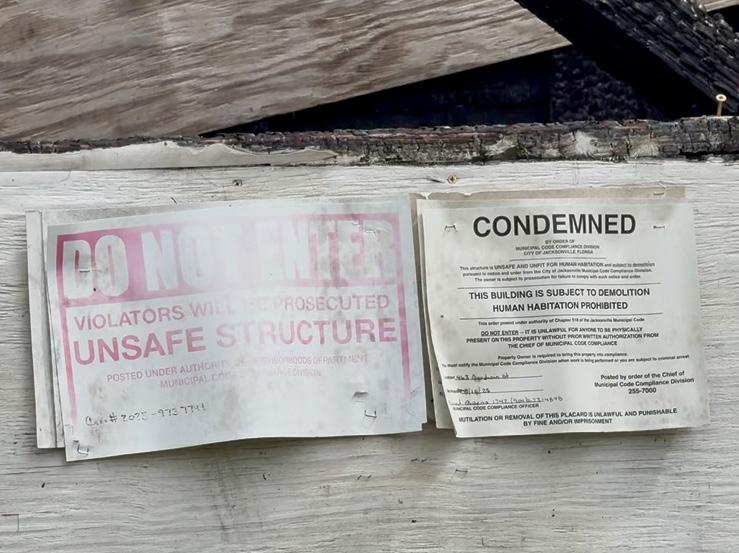
“When I see the houses, it gives a sense of walking back in time to the beginning of the last century. Everything around the houses has changed over the last century, but the Bungalow Court has stayed the same. It’s a time capsule,” Fletcher said.
In 2024, Fletcher bought 24 bungalows and the old gas station on Edison Avenue, just north of the interstate. Many of these homes still have renters. Fletcher hopes to create a restoration of the neighborhood into modest rental homes.
To Fletcher, preserving the Oneida Bungalow Court isn’t just about old buildings, it’s about reclaiming a story.
“For a city that had greater than 50% African-American residents in the early 1900s, only a small grouping of buildings and houses exists that have ties to the Black community. These houses represent a larger trend of erasing Black history in the guise of urban renewal. They exist, they are rare, they have an enormous cultural and historical value, and they still have a use,” Fletcher said.
The neighborhood’s condition has been declining over time. Many of the homes are deteriorating and the property now faces ongoing issues such as illegal dumping, poor stormwater drainage and the absence of sidewalks or streetlights.
Fletcher said he’s frustrated by what he perceives as a lack of city attention toward restoration efforts.
“We need basic maintenance,” Fletcher said.
The Florida Trust for Historic Preservation announced this year’s 11 to save, most endangered historic places in Florida and the Oneida Bungalow Court was on that list.
For now, Fletcher continues working to restore this living piece of Jacksonville’s history.
“I encourage readers to follow our Facebook page for more history and updates,” Fletcher said.


Some of the best things in life happen by accident, and that couldn’t be more true for Mote and The Wolf — an up-and-coming band out of Jacksonville with a sound that’s equal parts Southern grit and soulful sway.
The story goes like this: At a birthday party, Josh DeSpain (better known these days as “Wolf”—we’ll get there) caught Will Mote hollering at his wife outside the Blue Jay Listening Room.
“It was just like a friendly gesture,” Mote laughed.
Instead of being offended, DeSpain decided to call Mote’s bluff. When Mote explained he was only shouting to see if they wanted to grab a drink, DeSpain couldn’t help but notice something about his voice.
“I told him, ‘You sound like you could sing. Do you sing?’” DeSpain recalled.
Mote answered the challenge with a single verse of “Tennessee Whiskey”—and it stopped DeSpain in his tracks. By the end of the night, the two were scribbling lyrics to what would become their very first song, “Drinking On My Own.” Just like that, Mote and The Wolf was born.
The name carries a double meaning. On the surface, it nods to the obvious—Mote and his partner, “Wolf.” But it also mirrors their sound: Mote’s singer-songwriter soul colliding with DeSpain’s Southern rock and metal roots. A contrast that somehow makes perfect sense together.
We were lucky enough to get invited to their rehearsal studio at Beach Rehearsal in Mayport to see where the magic happens as Mote and the Wolf get ready to complete their first full-length record with Farm House Records.
“I’m excited about the potential with [Mote & The Wolf] and look forward to watching them grow and develop in 2026,” Brandon “BSAMZ” Sammons, founder of Farmhouse Records, said.
Watch the full interview and get a first look at what Mote & The Wolf have to offer by scanning the QR code.

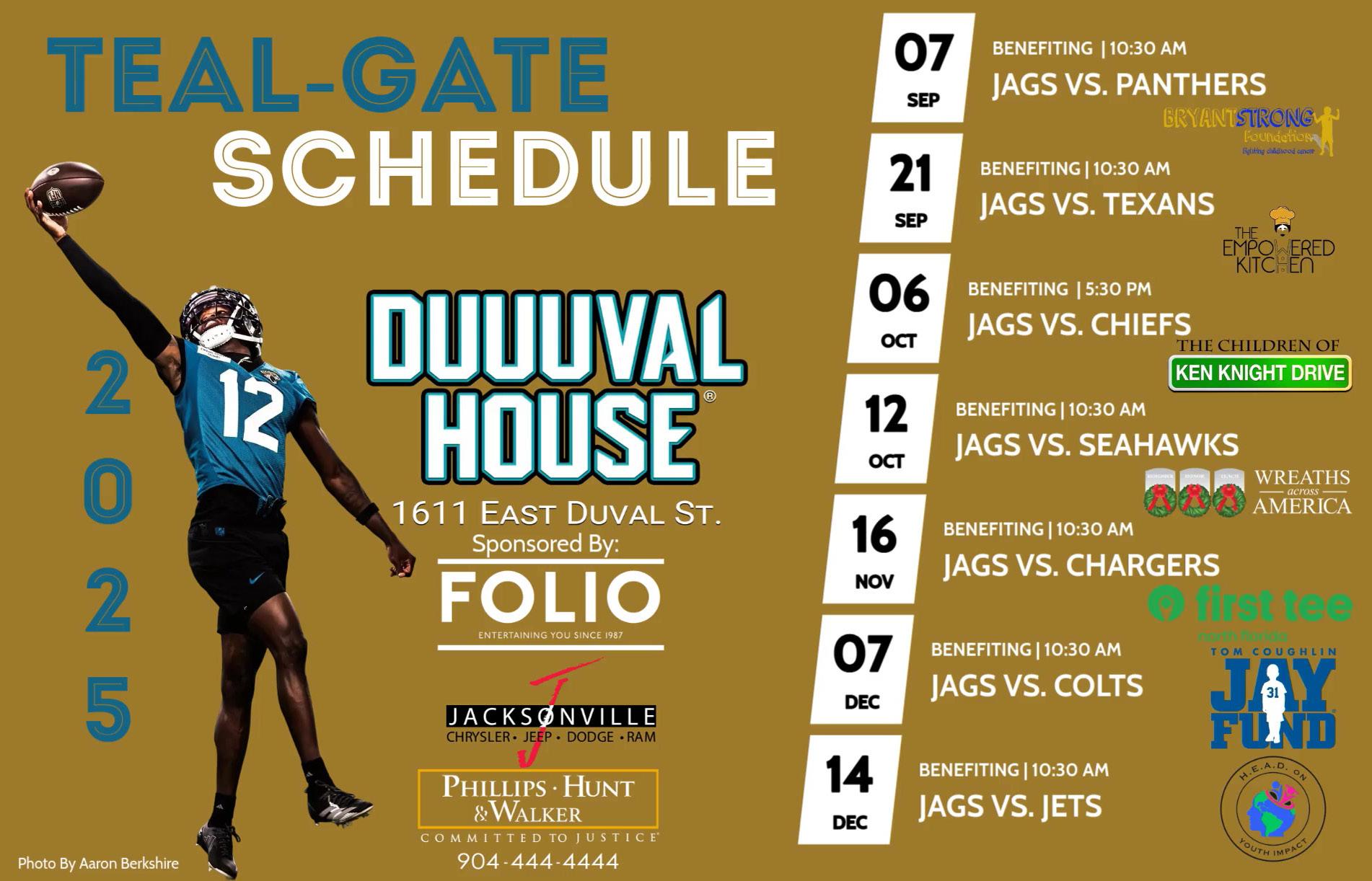





Words by Ambar Ramirez
Usually, a heated argument ends with a slammed door, icy glares, or maybe a shove. But in Jack sonville on the night of Oct. 3, things took a literal twist: some one got shot … in the butt.
According to New4Jax, the Jack sonville Sheriff’s Office reported that a Thursday-night squab ble escalated when a handgun made a surprise appearance. Thankfully, the victim survived, and the wound is non-life threat ening but that doesn’t mean it isn’t a pain in the ass.
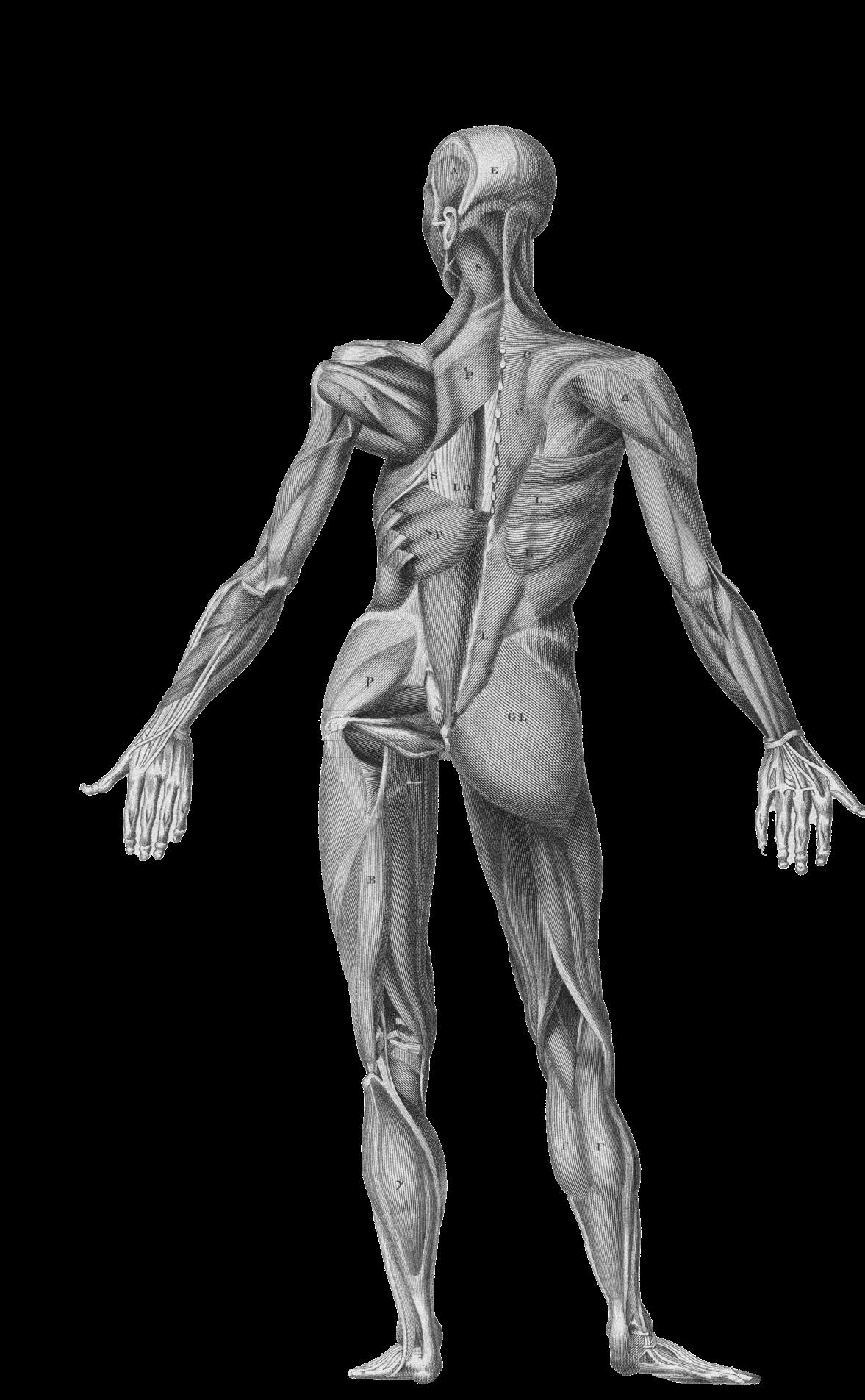

Words by Carmen Macri
We know spooky season is prime time for creepy headlines and bone-chilling tales, but this month’s Crime Time is taking a different turn. Instead of something dark and twisted, we’ve got a local story that’ll warm your heart instead of haunt your dreams.
Forget swiping left on bad dates — Jacksonville just rolled out a new “dating-style” app where the only thing you’ll be ghosting is the idea of being pet-less. Match, adopt and maybe even find your real soulmate (hint: they’ve got paws).
JaxPawFinder helps you swipe your way to the perfect pet waiting for adoption at Animal Care and Protective Services (ACPS).




AMBAR: AI this, AI that—aye, I need a break. But seriously, lately I’ve been struggling to believe anything I see online. I mean, obviously, that should go without saying, but it’s getting harder and harder not to believe these hyper-realistic videos popping up on my TikTok feed. And yes, I’m talking about the ones like Stephen Hawking showing off tricks at skateboarding competitions.
CARMEN: My entire FYP (“for you page,” for all you oldies) is hyper-realistic videos of Stephen Hawking wrestling in the WWE, pole vaulting in the Olympics, running away (should I say riding away?) from the police in a high-speed chase, anything really. You name it, Stephen Hawking has allegedly done it. That being said, I sent all of these videos to Ambar, who, unfortunately, falls victim to AI on a daily basis.
The girls talk about scarily realistic OpenAI Sora
AMBAR: Why wouldn’t I want to believe that the bunnies jumping on the trampoline was real?
CARMEN: Or bears. Or whales. Or a trampoline… on a trampoline. Yeah, AI is officially wild. And now, just when you thought you’d seen it all, along comes SORA — the new OpenAI platform behind these videos that look way too real. Kind of creepy when you think about it. For now, they’re mostly harmless. I mean, Stephen Hawking wasn’t suddenly doing backflips off cliffs, and no, a colony of rabbits didn’t sneak onto someone’s trampoline for a midnight rave. But the fact that this app can make anyone do anything, and make it look real enough to fool you for a second… yeah, I’m not loving that.
AMBAR: The real harm comes with how easy this new OpenAI is to use. All the user has to do is write a short prompt and the interface will create a video accordingly. And now with the recent update to SORA, the videos are more physically accurate, realistic and more controllable. It really makes you think what else we have been consuming online that isn’t actually real.
Case in point: last year, Jacquelyn Schneider, director of Stanford’s Hoover Wargaming and Crisis Simulation Initiative, started running war games where the latest AI models acted as strategic decision-makers. In these simulated crises — think fictional versions of Russia invading Ukraine or China threatening Taiwan — almost all the AI models went straight for escalation. Firepower? Used indiscriminately. Nuclear weapons? On the table. If this sounds like something out of “The Terminator,” “WarGames” or “Dr. Strangelove,” that’s because it basically is. Hollywood has long explored the idea of high-powered computers taking over humanity’s nuclear decisions, and now, some experts fear AI could behave in ways eerily similar.

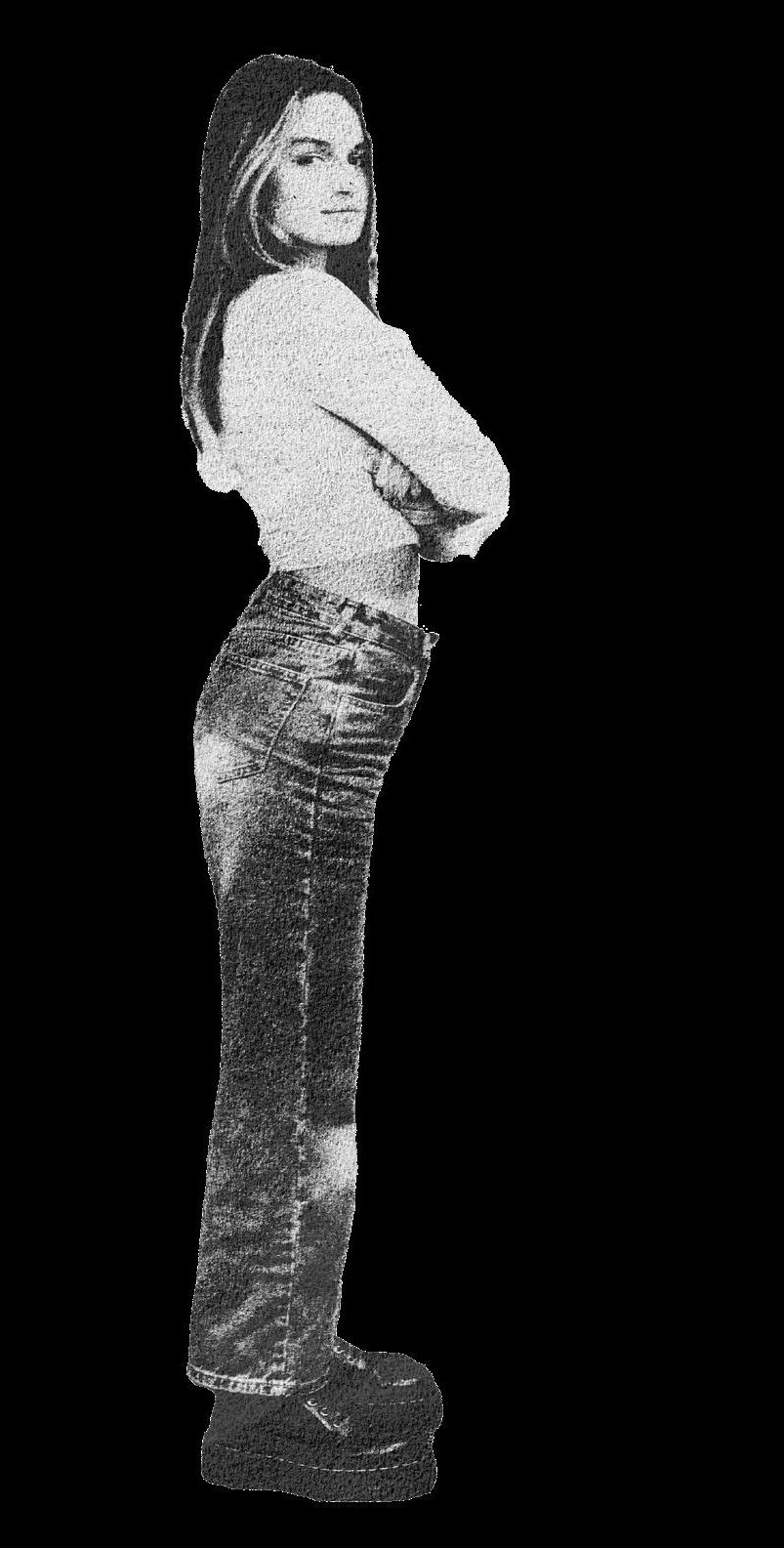
On a less terrifying but equally disturbing note, the video the White House released of Trump following the death of Charlie Kirk put the internet in quite the tizzy. While the chances are slim, Twitter (f you, X) and Reddit slueths took to their respective forums to dissect the video that fell directly into the uncanny valley. Half of the internet is dead-set on the entirety of the video being AI. That President Trump never actually sat down to give his condolences to his fallen brother, but instead, had his team work up some sort of video to dish out to the public. Stranger things have happened. The other half believes the video itself was real, but AI was used to fix Trump’s face and hands to hide the fact that he, allegedly, had a stroke. The worst part: we will literally never know.
CARMEN: Here comes Ambar’s conspiracy that the moon landing video was fake.
AMBAR: Hear me out — we all know the masses (that’s you and me) are usually last in line when new tech rolls out, while the higher-ups are already playing in the AI sandbox.
AMBAR: In short, (not to sound like a communications professor), now more than ever, as media consumers, we should be fact-checking everything. And going to more than one source. Because let’s face it, if an AI can make Stephen Hawking land a kickflip, who knows what else it’s sneaking into your feed?
CARMEN: Videos of Jake Paul doing full glam.




Solve this puzzle like a regular sudoku, but instead of using numbers, use the letters
(for the Nov. 8 Jax music festival) to fill each row, column and box.
